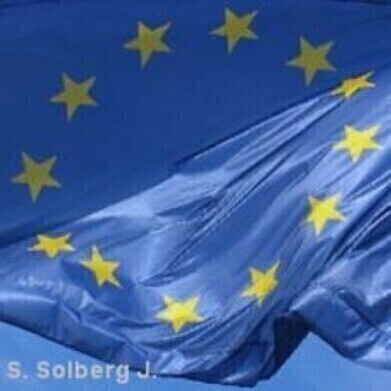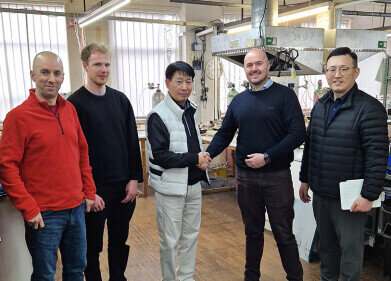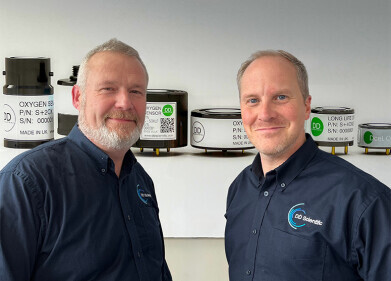Business News
Faster progress needed to meet EU resource-efficiency targets, ensure sustainable use of materials and enhance strategic autonomy
Sep 11 2023
The EU must continue its efforts to reduce consumption of materials and generation of waste to achieve a more circular economy according to the recently published European Commission’s revised Circular Economy monitoring framework. Faster progress is needed to meet EU resource-efficiency targets, ensure sustainable use of materials and enhance strategic autonomy.
The revised framework helps to better track progress in the transition to a circular economy in the EU and considers how it can contribute to climate neutrality, resilience and global sustainability.
Commissioner for the Environment, Oceans and Fisheries, Virginijus SinkeviÄÂÂÂÂÂius said ‘The exponential rise in the extraction of resources is the root cause of the triple planetary crisis: climate change, biodiversity loss and pollution. Most materials, together with the embedded energy and other resources used in their production, are too quickly discarded in our atmosphere, water and land. The revised monitoring framework highlights the need to speed up the transition towards a circular economy, which has been expanding in terms of investments, value added, jobs and innovation in the EU. Circularity makes our growth model more sustainable, competitive and resilient to current and future energy and security of supply challenges.
The revised monitoring framework for circular economy includes new indicators, such as material footprint and resource productivity. These indicators monitor the material efficiency of the EU’s production and consumption system. It also includes new indicators to measure progress towards the waste prevention targets. All these are key building blocks of a circular and zero-pollution economy. In addition, the framework monitors the contribution of a circular economy to sustainability, climate neutrality and resilience, by taking account of the consumption footprint, greenhouse gas emissions from production activities, material imports dependency and EU self-sufficiency for critical raw materials.
The data show that while EU production has become more resource-efficient, EU consumption of materials remains very high and needs to decrease in the future. In 2020, each European was responsible for 35 kg of plastic packaging waste, a 25% increase from 2010. The EU is managing waste more sustainably, but large differences among Member States remain and major efforts are needed to improve the management of some waste streams, in particular plastics.
Despite some improvements in circularity, the EU economy is still mostly linear, with secondary materials accounting for less than 12% of all materials used in the EU economy. Trade in secondary raw materials is increasing both within the EU and with non-EU countries. For many specialty metals and rare-earth elements (such as lithium, gallium and neodymium), the end-of-life recycling input rate is around 1%, while end-of-life recycling rates reach 16% for nickel and 22% for cobalt, both of which are raw materials used in batteries.
In recent years, circular economy sectors have become more innovative and grown in terms of investments, value added, and jobs. In the EU, private investments in specific economic sectors relevant to the circular economy amounted to EUR 121.6 billion in 2021, equivalent to 0.8% of the EU’s GDP. The sectors employed 4.3 million people, an increase of 11% compared with 2015, while the added value in the circular-economy sectors increased by 27% to reach around EUR 299 billion.
EU greenhouse gas emissions from production activities decreased by around 25% in 2008-2021, showing that the transition to a circular economy plays an important role in meeting climate neutrality. However, the EU’s consumption footprint increased by 4% between 2010 and 2021 and has led to impacts which are crossing certain planetary boundaries.
Monitoring progress towards a circular economy is essential to assess the effectiveness of EU policies and measures, and to identify best practices for circularity. In 2018, the Commission adopted an EU monitoring framework for the circular economy to measure progress in the EU and its Member States, based on available data from official European sources. It included ten indicators covering key aspects of circular economy and the priorities of the 2015 circular economy action plan, addressing production and consumption, waste management, secondary materials and competitiveness and innovation.
As announced in the circular economy action plan of 2020, the Commission has revised the circular economy monitoring framework to ensure it responds to the latest circular economy priorities, taking better account of climate neutrality and other priorities of the European Green Deal. It also responds to the recommendations from other EU institutions and stakeholders.
Digital Edition
IET 34.2 March 2024
April 2024
Gas Detection - Biogas batch fermentation system for laboratory use with automatic gas analysis in real time Water/Wastewater - Upcycling sensors for sustainable nature management - Prist...
View all digital editions
Events
Apr 30 2024 Melbourne, Australia
Apr 30 2024 Birmingham, UK
May 03 2024 Seoul, South Korea
May 05 2024 Seville, Spain
May 06 2024 Minneapolis, MN, USA



















